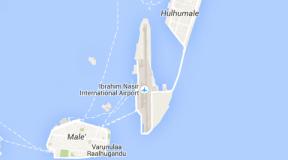ZHKB vaccination decoding. Vaccinations for children: to do or not. Who just need
Producer: FSUE NPO Microgen Russia
ATC code: J07BD51
Pharm group:
Release form: Liquid dosage forms... Injection.

General characteristics. Composition:
Active substance: not less than 1,000 (3.0 lg) tissue cytopathogenic doses (TCID50) of measles virus.
Excipients: stabilizer - mixture aqueous solution LS-18 *, 10% gelatin solution, gentamicin sulfate. Note. * The composition of an aqueous solution of LS-18: sucrose, lactose sodium glutamic acid, glycine, L-proline, Hanks dry mixture with phenol red, water for injection.
Live measles culture vaccine, lyophilisate for preparation of solution for subcutaneous administration, is prepared by culturing the Leningrad-16 (L-16) measles virus vaccine strain on a primary cell culture of quail embryos.
Indications for use:
Planned and emergency prevention. Routine vaccinations are carried out twice at the age of 12 months and 6 years for children who have not had measles. Children born from mothers seronegative to the measles virus are vaccinated at the age of 8 months and then at 14-15 months and 6 years. The interval between vaccination and re-vaccination should be at least 6 months.
Children aged 1 to 18 years, inclusive, and adults under the age of 35 (inclusive), who have not been vaccinated earlier, who have no information about measles vaccinations, who have not had measles previously, are vaccinated in accordance with the instructions for use twice with an interval of at least 3 x months between vaccinations.
Individuals previously vaccinated once are subject to a single immunization with an interval of at least 3 months between vaccinations.
Emergency prophylaxis is carried out to contact persons without age limitation from the foci of the disease, who have not previously been ill, have not been vaccinated and have no information about preventive vaccinations against measles or who have been vaccinated once. In the absence of contraindications, the vaccine is administered no later than 72 hours after contact with the patient.
Method of administration and dosage:
Immediately before use, the vaccine is diluted with a solvent for measles, mumps and mumps-measles vaccines of cultured live (hereinafter referred to as the solvent) at the rate of 0.5 ml of solvent per one vaccine dose of the vaccine.
The vaccine should dissolve completely within 3 minutes to form a clear pink solution.
Vaccine and solvent in ampoules with broken integrity, labeling, and also when they are changed are not suitable for use physical properties (colors, transparency, etc.), expired, improperly stored.
The opening of the ampoules and the vaccination procedure are carried out with strict adherence to the rules of asepsis and antiseptics. The ampoules at the incision site are treated with 70% alcohol and broken off, while preventing alcohol from entering the ampoule.
To dilute the vaccine with a sterile syringe, take the entire required volume of the solvent and transfer it into an ampoule with a dry vaccine. After mixing, the needle is changed, the vaccine is drawn into a sterile syringe and an injection is made.
The vaccine is injected subcutaneously in a volume of 0.5 ml under the scapula or in the shoulder area (on the border between the lower and middle third of the shoulder from the outside), after pretreating the skin at the injection site with 70% alcohol.
The diluted vaccine is used immediately and cannot be stored.
The vaccination carried out is registered in the established registration forms, indicating the name of the drug, the date of vaccination, the dose, the manufacturer, the batch number, the date of manufacture, the expiration date, and the reaction to vaccination.Application features:
Considering the possibility of development allergic reactions immediate type (anaphylactic shock, Quincke's edema,) in especially sensitive individuals, the vaccinated must be monitored for 30 minutes.
Vaccination sites should be provided with anti-shock therapy.
Application during pregnancy and during the period breastfeeding... Pregnancy is contraindicated. It is allowed to vaccinate women during breastfeeding by the decision of the doctor, taking into account the assessment of the ratio of the possible risk of infection and the benefits of vaccination.
Side effects:
In most vaccinated people, the vaccination process is asymptomatic.
After the vaccine is administered, the following reactions may occur varying degrees severity:Often (1/10 - 1/100):
From 6 to 18 days, temperature reactions, slight hyperemia of the pharynx, rhinitis can be observed.
With the massive use of the vaccine, the increase in body temperature above 38.5 ºС should not be more than 2% of the vaccinated.Rarely (1/1000 - 1/10000):
Coughing and, lasting for 1-3 days;
... slight hyperemia of the skin and mild edema, which disappear in 1-3 days without treatment.
Very rarely (<1/10000):
Mild malaise and measles-like rash; - convulsive reactions that occur, most often, 6-10 days after vaccination, usually against a background of high temperature;
... allergic reactions that occur in the first 24-48 hours in children with allergic altered reactivity.
Note: A history of febrile illness, as well as an increase in temperature above 38.5 ºС in the post-vaccination period, are an indication for the appointment of antipyretics.
Interaction with other medicinal products:
Vaccination against measles can be carried out simultaneously (on the same day) with other vaccinations of the National Calendar of Preventive Vaccinations (against mumps, rubella, poliomyelitis, hepatitis B, whooping cough, diphtheria, tetanus) or not earlier than 1 month after the previous vaccination.
After the administration of human immunoglobulin preparations, measles vaccinations are carried out no earlier than 3 months later. After the introduction of measles vaccine, immunoglobulin preparations can be administered no earlier than 2 weeks later; if it is necessary to use immunoglobulin earlier than this period, vaccination against measles should be repeated.
After immunosuppressive therapy, measles vaccination can be carried out 3-6 months after the end of treatment.
Contraindications:
1. Severe forms of allergic reactions to aminoglycosides (gentamicin sulfate, etc.), chicken and / or quail eggs.
2. Primary, malignant blood diseases and neoplasms.
3. Strong reaction (temperature rise above 40 C, edema, hyperemia more than 8 cm in diameter at the injection site) or complication to the previous administration of measles or mumps-measles vaccines.
4. Pregnancy.
Note: If available, vaccination of persons with 1 and 2 immune categories is allowed (absence or moderate immunodeficiency).
Storage conditions:
In accordance with SP 3.3.2.1248-03 at a temperature of 2 to 8 ° C, keep out of the reach of children. Freezing is not allowed. Expiration date - 1 year.
It is transported in accordance with SP 3.3.2.1248-03 at a temperature of 2 to 8 ° C. Short-term (no more than 24 hours) transportation is allowed at temperatures from 9 to 20 ° C. Freezing is not allowed.
Vacation conditions:
On prescription
Packaging:
Lyophilisate for the preparation of a solution for subcutaneous administration. 1 or 2 doses in an ampoule. In a pack of 10 ampoules with instructions for use and an insert with the stacker number.
Measles vaccination is now considered an important preventive measure. Measles is a very serious and contagious disease. It is transmitted during contact with a sick person. This disease is common only in humans. There is an opinion that measles painlessly disappears in children under 10 years of age. However, it is wrong. Of course, the mortality rate in children is not very high, but it is still not worth the risk, it is better to prevent infection.
In addition, measles can cause serious complications. They have an unpleasant effect on the patient's health and can impede a speedy recovery. Such complications are more common: encephalitis, abundant loss of proteins in the body, pathology of the nervous system. They can occur in one person in every thousand infected. In any case, the infectious disease will be very unpleasant to pass. Therefore, it is necessary to take all the required precautions.
Measles vaccine
Live measles vaccination is quite effective in preventing disease. In case of an unpleasant course of infection, the vaccine helps to avoid serious complications and to protect others from infection. Disease prevention should be mandatory. It is especially necessary to carry out it in children under 4 years of age to avoid the disease. The child's body is most prone to infection.
There are two main types of measles vaccine:

- monovalent;
- polyvalent.
The monovalent vaccine contains only one component - an attenuated measles virus. It is set up to prevent only one disease and does not apply to others. A multivalent vaccine contains several components. It aims to produce antibodies against several diseases. The vaccine may contain from 2 to 4 components, for example: measles, rubella, chickenpox or measles, mumps and rubella.
The effectiveness of vaccines is the same no matter how many ingredients they contain. The World Health Organization markets only safe and beneficial vaccinations to the pharmaceutical market. They are all interchangeable and do not affect each other's usefulness. Negative consequences do not arise from the use of different drugs.
The measles vaccine comes in dry powder form. Before the injection is injected into the body, the dried powder is diluted with a solvent. The diluted drug should be stored for no more than an hour, otherwise it loses its properties to induce immunity to infection. Simply put, it becomes pointless to use. The measles cultured live dry vaccine is stored frozen at a temperature of -20 to -70 ° C. The reconstituted vaccine can be stored in the refrigerator for up to 5 hours. Also, the dry measles cultured vaccine must be stored in colored flasks so that the sun's rays do not penetrate the drug. Because of them, the vaccine loses its properties and becomes useless.
Back to the table of contents
Why is measles vaccine done?
 Vaccination is an important factor in preventing disease occurrence. It prevents epidemics and complications in case of infection. The risk of contracting measles is quite low. Only one of 100 thousand vaccinated people can get sick. And the disease is transferred much easier than in the absence of vaccination.
Vaccination is an important factor in preventing disease occurrence. It prevents epidemics and complications in case of infection. The risk of contracting measles is quite low. Only one of 100 thousand vaccinated people can get sick. And the disease is transferred much easier than in the absence of vaccination.
Many parents may have heard that infections such as measles, chickenpox and rubella are better tolerated by children, and after a person has been ill, lifelong immunity to these diseases is developed. In fact, this theory is not entirely true. A child, like any other person, will not be given an infectious disease so easily. Therefore, a prophylactic live measles cultured vaccine, or ZHPV, must be produced for a baby at an early age in order to avoid the spread of infection among other children. Newborn babies are immune to the disease for several months. It is because of this that children are not immediately vaccinated, but only 9 months after birth. If the baby's mother has had measles, then she passed on her immunity to the child, perhaps he will not even need vaccination against this disease.
ZhKV (transcript - live measles vaccine) enables the body to build strong immunity to this disease.
It is called alive because it contains a very weakened virus that cannot spread throughout the body. Immunity begins to immediately respond to infection, thereby trying to prevent the spread of the disease inside a person. And in case of subsequent infection with the same virus, protective antibodies will instantly attack it.
Back to the table of contents
Measles vaccination of children and adults
Vaccination for children and adults is considered an important procedure. Its need is due to two main reasons:
- An unfavorable epidemiological situation. It is influenced by the increased migration of people who may be carriers of various infectious diseases from other countries or regions.
- Thanks to timely preventive vaccination, the number of people infected with measles has been reduced by 15%.
Adults need to be re-vaccinated before 35 years of age, because the first vaccine introduced in childhood gives immunity for 20 years. After that, with age, the immune system becomes susceptible to disease. The measles cultured live dry vaccine should be reintroduced into the body to avoid accidental infection. The disease is more difficult for adults.
Many experts recommend re-vaccination to avoid an epidemic among the people around the sick person. Measles complications for adults are very dangerous. They can be far more troublesome than measles itself. In this case, several diseases will have to be treated at once in addition to the main one, and this will create unnecessary problems for the sick person.
Children should be vaccinated without fail, since at an early age the body has not yet matured and is prone to severe complications. A baby should only be vaccinated at least 9 months after birth. This is due to the fact that the child's immune system in the first six months of his life is too weak for the introduction of infection, therefore, his body is protected by antibodies transferred from the mother.
Doctors recommend vaccinating a child at the age of 1 year, since the susceptibility to infection will be one hundred percent, and the immune system will be able to cope with the disease on its own. In some countries, measles vaccination is given for the first time at 9 months, and the second at 18. This is due to the fact that the probability of getting sick even before the formation of immunity is extremely high.
Most often, re-vaccination of children is carried out at the age of 6 years. It aims to avoid measles epidemics. Vaccination for preschoolers allows you to avoid infection in children and prevent massive epidemics or quarantine. Now it is quite possible, but about 10 years ago, a massive measles epidemic was not uncommon.
How effective is the measles vaccine or is it all a bluff from people in white coats? Nothing darkens a positive outlook on the world like the illness of someone close to you. And because measles often walks around the country. Then every reasonable person has a natural question - what kind of disease is this, how it proceeds and how to deal with it. And will this remedy help to avoid an unpleasant disease.
What is measles and how does the measles vaccine work
People have been sick with measles since ancient times, apparently, epidemics of the disease mowed down entire villages, but all these cases were not officially documented. The first mention of the disease can be found in the ninth century AD, when an Arab doctor named Ramses described the symptoms of infection. However, the Arab physician, having correctly described the external symptoms of measles, mistakenly considered it a mild form of smallpox, and treated his patient for the wrong disease.
Finally, they put an end to the discovery of the disease only in the middle of the seventeenth century, English and French doctors at the same time. However, these scientists were able to describe in detail the symptoms and complications of measles, but did not get to the bottom of the main causative agent of the disease. It was possible to do this only at the beginning of the twentieth century, by experiment on monkeys. Doctors have found that measles is an acute infectious disease that is transmitted from sick to healthy by airborne droplets. And only in the middle of the twentieth century, in 1954, a virus was identified - the causative agent of measles.
From about the middle of the nineteenth century, measles could not be fought and it was considered a deadly childhood disease that mows down the younger generation like a black mower. But after the discovery of the pathogen, scientists developed a vaccine for livestock and an immunization program, as a result of which epidemics of a dangerous disease subsided and soon ceased.
However, due to the trendy trend among parents - not to vaccinate children, in our country, outbreaks of measles disease, from which babies suffer, have again begun to be recorded. Therefore, know that the measles vaccination is not an empty invention of doctors, but a really effective remedy that will help save your child from a dangerous infection.
How does the livestock vaccine work?
The main thesis used by illiterate parents, who “protect” their children from such unnecessary, in their opinion, vaccinations, is that “a child is injected with a live infection in a syringe. He will definitely get sick from this, so nothing needs to be done. " And it is precisely in such parents who run past the vaccination room that children most often get sick, despite the fact that no "infection" was injected to their children. Why is it this way?
First, let's take a look at how any vaccine generally works. Our body is designed in such a way that if any infection gets into it, at first it does not know how to fight it. But the smart immune system adjusts to the characteristics of the causative agent of the virus, gradually destroys it, and remembers what to do in this case again so that we do not get sick. That is, in simple terms, we develop immunity to any disease.
And if you have not been sick with this infection, then immunity cannot form, and doctors help to do this artificially. To do this, the child is injected with the very live pathogen, but only specially weakened. And due to the fact that the infection is present in the body, but does not work in full force, immunity is developed, and the disease does not arise. Yes, that is why we become immune to disease. And it is thanks to vaccination. Massively carried out in the country back in the days of the USSR, such diseases as smallpox, plague and other remnants of the Middle Ages were practically forgotten.

In the case of the fight against measles, the live measles vaccine comes to our aid, this is what it is called in official medical sources. It is this wonderful microbiological preparation that allows us to effectively prevent the disease and its unpleasant consequences.
It should be remembered that measles vaccination is compatible with vaccines against other diseases, such as rubella and mumps endemic mumps. Therefore, most often you can find complex preparations, however, there are also vaccines against measles, without the addition of proteins of other pathogens.
Vaccination procedure
Vaccination against measles disease is usually carried out in two stages, and the age of the person and the conditions of his residence and location do not affect this in any way. However, sometimes it is necessary to deviate from the generally accepted rules of vaccination.
If someone in your family is sick with measles. All family members in contact with him urgently need to be vaccinated, and this can be done even if you are already many years old. The main thing is that you cannot vaccinate a person after forty years. Since at this age the body no longer develops its immunity so effectively and strong side effects are possible.
If the baby's mother has never had measles and has no immunity against this infection. Then the baby is vaccinated at the age of eight months to give his young body an impetus to develop useful antibodies. After the baby, you need to bring it to the vaccination room and at the age of one and a half years, for the second vaccination. This is guaranteed to save a young member of society from a dangerous disease.
Also, at the age of six months, children are vaccinated in disadvantaged countries with epidemics. This reduces the number of root outbreaks among the poor.
What actually happens outside the door of the vaccination room when a nurse takes a baby into her caring hands? Her syringe contains one inoculation dose of the vaccine, which is approximately 0.5 milliliters in volume. This substance is injected into the shoulder of the arm or under the scapula. Yes, it is a little painful, but it is guaranteed to save the child from those unpleasant sensations that measles brings with it.
One fully vaccinated vaccine is guaranteed to keep your child free of infection for up to twelve years, but there have been cases where immunity persisted until the age of twenty-five.
Paranoid people need to know that no livestock vaccination is ever given without the written permission of the parents. Remember that no one will take the child to the vaccination room without your consent. If you do not want your child to have this procedure, then you must issue a written waiver. This disclaimer must be updated annually and must be done in duplicate.

However, having abandoned the live measles vaccine, the instructions for the use of which clearly regulate all side effects and contraindications. You are putting your son or daughter at serious risk of getting sick, especially in our troubled times. Do not risk the health of children!
What are the reactions to vaccination?
The easiest way not to be afraid of vaccination is when you know what reactions to the vaccine are. They are local and common.
A local reaction to the vaccine is a slight redness at the injection site and swelling, which usually go away in two to three days. The general reaction is slightly different, these include redness of the throat, perspiration, slight tearing and conjunctivitis. Sometimes nosebleeds, fever, and a small measles-like rash can be added to the general reaction. However, all these unpleasant sensations quickly disappear a few days after the vaccination.
Reactions to the vaccine are small, in this case the temperature rises by no more than a degree, and the rest of the symptoms are completely absent. In cases of moderate reaction, there is a slight manifestation of the listed symptoms, and the temperature rises slightly, up to about thirty-seven degrees Celsius.
In the case of an acute manifestation of a reaction to the measles vaccine, the temperature is high, and the symptoms of intoxication are very obvious. But strong reactivity to the vaccine is rare. Also, sometimes complications from measles vaccination can be found. They are independent of the type and quality of the vaccine product and other circumstances.
There are several types of vaccine complications.
- Due to improper vaccination procedure;
- Due to the use of a low-quality or expired vaccine;
- Due to personal intolerance to any component of the vaccine;
- Due to non-compliance with the rules for contraindications.
Adverse reactions to the vaccine are divided into several types:
- A strongly pronounced reaction of poisoning, it occurs on the sixth - eleventh day after the measles vaccination. It is characterized by fever, measles-like rash, intoxication;
- A convulsive reaction to a vaccine preparation is characterized by the occurrence of convulsions against a background of high fever. However, this is not considered a serious complication;
- Post-vaccination encephalitis. It is characterized by symptoms typical of other infections, such as blurred consciousness, dizziness, vomiting, nausea, and other problems;
- Post bacterial complications. They are not a direct consequence of vaccination, but represent a secondary addition of infection due to non-compliance with the rules for caring for a child after it;
- Various allergic reactions, they can manifest themselves as a common rash, and in the form of edema and other related symptoms.
Contraindications
As with any vaccine, measles vaccination has contraindications. The drug should not be used during pregnancy, in case of complications from previous vaccinations, in the presence of immunodeficiency, malignant tumors, with the introduction of blood components and its preparations. Also, you cannot vaccinate if the child has an allergic reaction to chicken proteins.
But despite all the disadvantages of vaccination against measles, the drug has a plus. With its correct use, the child will be guaranteed and reliably protected from the occurrence of a dangerous disease. Therefore, do not pass by the vaccination room, and without delay, run to the pediatrician or therapist, if we are talking about an adult.
The measles vaccine is included in the vaccination schedule adopted in Russia and it is assumed that the corresponding vaccine will be delivered to all children without exception. However, many parents refuse to vaccinate for fear of their child's health. Should a child be vaccinated against measles? In the article we will answer this question in detail.
Does measles threaten our children?
For a long time, measles was a forgotten disease and almost never occurred in children or adults. A measles outbreak occurred unexpectedly in 2014 in Novosibirsk, then in 2015 in the Altai Territory, affecting about 100 people.
This is an example of how we need to take responsibility for vaccination. Even if the disease seems to have receded, one should not neglect the vaccination, endangering one's own and other people's children, because cases of infection from abroad, unfortunately, are no longer uncommon.
First of all, parents need to know: in the absence of vaccination, there is no child who would not be able to get measles. Measles is a highly contagious virus, it easily penetrates into homes and child care facilities and easily affects the child's body.
Overview of Measles Vaccine
The measles vaccine is nothing more than a live, but weakened, artificially created virus. The virus differs from its natural counterpart in that it cannot cause disease. Its capabilities and task are reduced to the mobilization of the immune system and the development of protection against infection for a period of about 20 years. The measles vaccine is highly effective and generally well tolerated.
Measles vaccination: timing, basic rules
According to the National Vaccination Calendar, children are vaccinated against measles from one year on. The second vaccination - a kind of insurance against possibly failed immune protection - should be given to a child at 6 years old.
It is important to observe the following rules here:
- due to the fact that vaccine viruses are easily inactivated with alcohol and other antiseptics, the injection site is not treated with such substances.
- the first two days after the procedure, you should refrain from walking in order not to catch a cold;
- can i bathe my child after measles vaccination? It is not recommended to bathe the child for 2 days after any vaccination.
Contraindications for vaccination are:
- immunodeficiency,
- leukemia,
- malignant diseases in which immunity is reduced,
- allergic reactions to aminoglycosides and egg protein.
Types of measles vaccines: which one to choose?
Live measles vaccine (LIV) is a monovaccine. Its virus is grown on a cell culture of quail embryos. Presented in dry ampoules. Contains a small amount of gentamicin. Stored at low temperature (+ 8 ° C).
This also includes the monovaccine Ruvax (Aventis).
Live mumps-measles vaccine - divaccine. Consists of mumps virus and measles. Available in ampoules, one dose. Also contains a small amount of gentamicin.
M-M-R II (America) is one of the most popular vaccines. This triple vaccine against measles, mumps, rubella is intended. There are vials of 1 and 10 doses, packed together with a solvent.
Priorix (England) - triple vaccine: measles, rubella, mumps. Contains some neomycin. The vaccine is produced in vials with one vaccination dose.
Human immunoglobulin is an option for passive prevention of measles. It is isolated from donor plasma. They are used when it is not possible to vaccinate, but at least some kind of protection is needed. The effect is short-lived.
Monovaccines are used in adults or when it is suspected that the child has been in contact with a sick person. In other cases, children are routinely vaccinated with triple or divaccine. They are equal in quality.
All vaccines are administered in 0.5 ml subcutaneous doses under the scapula.
Measles vaccine reactions
The triple vaccine, which protects against measles, rubella and mumps, usually does not cause a reaction in a child. Allergic reactions can be associated with neomycin or chicken protein used in the creation of the vaccine. Children with an allergy to this component are preferable to the Russian monovaccine, which is prepared without the participation of chicken protein.
In addition to allergies, there are other possible reactions to the vaccine, such as fever. A slight increase in temperature is considered normal, only a high temperature (39-40 ° C) needs to be removed with antipyretic and antihistamines.
In general, measles vaccination is not associated with clinical symptoms. It is extremely rare that mild symptoms of the disease may appear:
- conjunctivitis,
- runny nose
- cough,
- 5% of those vaccinated may have noticeable rashes. This reaction lasts about 2-3 days.
Despite the similarity of symptoms in the disease, after measles vaccination, the child is not contagious.
Of course, everyone can talk about the benefits and dangers of vaccinations and even doubt their necessity. Nevertheless, the events of the past years have shown that vaccination cannot be ignored. Vaccination against measles practically does not cause complications in children, and its benefits compared to the possible consequences of the disease are incomparable.
Lyubov Maslikhova, therapist, specially for the site
Useful video
VACCINATION AGAINST TUBERCULOSIS
Prevention of tuberculosis is vaccination against tuberculosis with the BCG vaccine (BCG - bacillus Calmette - Guerin). Vaccination against tuberculosis is a live dried bacteria of the vaccine strain, weakened by successive "subcultures" over 13 years.
The BCG vaccine is administered intradermally on the 3rd-7th day of a child's life. With the correct administration of the vaccine, a white papule is formed, which disappears after 15-20 minutes. However, after 4-6 weeks - it forms again, turning into a pustule, covered with a crust. After 2-4 months, a scar with a diameter of up to 10 mm is formed under the crust in 90-95% of vaccinated children. The BCG vaccination against tuberculosis is a proven remedy against the disease.
FIRST VACCINATION AGAINST VIRAL HEPATITIS B
The hepatitis virus is especially dangerous for the child's body. Being transferred at an early age, the disease becomes chronic in 50-95% of cases, which further leads to cirrhosis or primary liver cancer.
In newborns, viral hepatitis in 90-95% is asymptomatic, without classic jaundice and in 70-90% of cases leads to chronic carriage of the virus, and in 35-50% to chronic hepatitis.
Vaccination against hepatitis is a reliable protection against a dangerous disease. Vaccination against hepatitis is given in the first 12 hours of life.
The hepatitis vaccine is repeated within the first month of the child's life. A child can get hepatitis without vaccination. The main route of infection is through blood (most often through blood transfusion).
A second hepatitis vaccine will protect against this disease.
FIRST VACCINATION AGAINST DIPHTHERIA, WHOLE, TETANUS, POLIOMYELITIS
Vaccination against diphtheria, pertussis, tetanus, poliomyelitis is carried out using a combined DTP or ADS-m vaccination.
The Russian DPT vaccine in terms of the set of components is identical to the French D.T. Cook. DPT includes diphtheria vaccine and tetanus vaccine.
In some cases (in case of allergic reactions or in the presence of contraindications to DTP vaccination), the ADS-m vaccine is used, an effective vaccine against diphtheria and tetanus.
The first vaccination against diphtheria, pertussis, tetanus, poliomyelitis is carried out in the third month of a child's life.
SECOND VACCINATION AGAINST DIPHTHERIA, WHOLE, TETANUS, POLIOMYELITIS
The DPT vaccine is administered to the child a second time at 4.5 months. All components of the DPT vaccine are able to form immunity in almost 100% of vaccinated patients.
The diphtheria vaccine is given intramuscularly. The vaccine is administered against the background of the use of antipyretic drugs, which prevents a possible rise in temperature and eliminates the risk of temperature seizures in young children. In addition, antipyretic drugs have anti-inflammatory and analgesic properties.
DTP vaccine is an effective means of preventing tetanus, diphtheria, pertussis, polio
THIRD VACCINATION AGAINST DIPHTHERIA, WHOLE, TETANUS, POLIOMYELITIS
The third DTP vaccination against diphtheria, pertussis, tetanus, poliomyelitis is carried out at 6 months. This completes the primary course of vaccinations that form immunity for about 10 years. The whooping cough vaccine forms a shorter immunity - 5-7 years. The polio vaccine (OPV) is given by mouth. It belongs to the least reactogenic vaccines. In addition to OPV, there is also the Imovax Polio vaccine. This vaccine is given by injection. Vaccination against poliomyelitis "Imovax Polio" does not contain live viruses and therefore is safe even for children with impaired immune systems and HIV-infected.
THIRD VACCINATION AGAINST VIRAL HEPATITIS B
Modern hepatitis prevention is based on vaccination. The third hepatitis vaccination is carried out at 6 months. Hepatitis b-vaccine "Engerix B" is a special suspension for injection. Dose for children - 0.5 ml (1 dose).
"Engerix B" promotes the development of immunity against the hepatitis b virus. Contains purified hepatitis B virus basic antigen (HBsAg), obtained using recombinant DNA technology.
Hepatitis B vaccination with the drug "Engerix B" provides protection against hepatitis B in at least 98% of people who received 3 injections of the drug.
VACCINATION AGAINST MEASLES, REDELLA, EPIDEMIC PARITITIS
The first vaccination against measles, rubella, mumps is carried out at 12 months. Imported measles, rubella, mumps Priorix vaccine or domestically produced measles vaccine is used.
Priorix complies with the World Health Organization requirements for the production of biologicals, the requirements for vaccines against measles, mumps, rubella and live combination vaccines.
Vaccination against measles, mumps, rubella - mandatory vaccination for children 12 months old
FIRST REVACCINATION AGAINST DIPHTHERIA, WHOLE, TETANUS, POLIOMYELITIS
The first revaccination against diphtheria, whooping cough, tetanus, poliomyelitis, in accordance with the data of the national calendar of preventive vaccinations, is carried out at 18 months. The same vaccines are used as for primary vaccinations - ADS, DPT and OPV. If necessary, in our clinic, you can take a whooping cough test.
Revaccination of DPT is a necessary step to maintain the effect of previous vaccinations against diphtheria, pertussis, tetanus, poliomyelitis.
SECOND REVACCINATION AGAINST POLIOMYELITIS
Childhood vaccination, according to the national immunization schedule, includes polio vaccine at 20 months. The vaccine is made from live attenuated strains of the three types of polio virus. It is administered pyrorally in drops in an amount that depends on the concentration of the drug.
A child should not eat for one hour before or after receiving polio vaccine. If, after receiving the vaccine, the child spits up, the procedure is repeated. If the regurgitation recurs, the vaccine is no longer administered, and the next dose is given after 1 month.
REVACCINATION AGAINST MEASLES, REDNOYA, EPIDEMIC PAROTITIS
Secondary vaccination against measles, rubella, mumps is prescribed at the age of 6. Measles, rubella, mumps are some of the most common childhood infectious diseases. Before the child enters school, it is necessary to make a comprehensive vaccination against measles, rubella, mumps using the Priorix vaccine or measles and mumps vaccines.
The rubella vaccine is not given until the acute illness ends. For mild ARVI, acute intestinal diseases, etc., vaccinations are allowed immediately after the temperature has returned to normal.
FIRST REVACCINATION AGAINST TUBERCULOSIS
Revaccination against tuberculosis is carried out at the age of 6-7 years. To maintain immunity, the BCG-m vaccine is administered to healthy children with a negative result from a previously conducted Mantoux test.
The main indicator of a child's immunity to tuberculosis is the appearance of a positive Mantoux test and the diameter of the graft scar 5 millimeters or more. The consequences of tuberculosis are extremely dangerous. In the absence of treatment, the mortality rate from active tuberculosis is 50%. In other cases, untreated tuberculosis becomes chronic. This is why revaccination against tuberculosis is especially important in childhood.
SECOND REVACCINATION AGAINST DIPHTHERIA, TETANUS
The second revaccination against diphtheria and tetanus is done at the age of 7-8 using the ADS-M vaccine.
The diphtheria and tetanus shots for primary school children contain reduced levels of the diphtheria component. An analogue of the Russian vaccine ADS-M is the French-made vaccine Imovaks DT Adyult.
VACCINATION AGAINST REDOUSA (GIRLS)
Rubella vaccination for girls is carried out at the age of 13. Vaccination is essential to prevent rubella in future pregnancy. Rubella vaccination is done using the imported drug Rudivax.
Rudivax vaccine contains live attenuated rubella viruses. Due to the fact that the vaccine is "live", its effectiveness is 95-100%. The duration of immunity caused by the Rudivax vaccine is more than 20 years.
VACCINATION AGAINST HEPATITIS (PREVIOUSLY NOT VACCINED)
If the vaccination was not carried out at a young age, you can get the hepatitis vaccine at the age of 13. The drug "Engerix B" is an effective vaccine that promotes the development of immunity against the hepatitis b virus.
Prevention of viral hepatitis is the best way to avoid a dangerous disease that threatens the development of acute liver failure or even cirrhosis in adolescence.
THIRD REVACCINATION AGAINST DIPHTHERIA, TETANUS, POLIOMYELITIS. SECOND TUBERCULOSIS REVACCINATION
The third revaccination against diphtheria, tetanus, poliomyelitis, as well as revaccination against tuberculosis is carried out at the age of 14-15. Vaccination against diphtheria and tetanus - ADS; vaccine against poliomyelitis - OPV, against tuberculosis - BCG-m.
Revaccination against tuberculosis is carried out only in the absence of the disease in an active form. The polio vaccine OPV is given pyrorally. It is one of the least reactogenic vaccines, practically does not cause side effects.
REVACCINATION AGAINST MEASLES, EPIDEMIC PARITITIS SINGLE VACCATED
Vaccination against measles and mumps is done at the age of 15-16, if the vaccination was carried out once before.
Measles vaccine stimulates the production of antibodies to the measles virus, which reach a maximum level 3-4 weeks after vaccination. The drug meets the WHO requirements. The measles vaccine contains at least 1,000 TCD of the measles virus, a stabilizer, and gentaficin sulfate. The mumps vaccine stimulates the production of protective antibodies, which reach their maximum concentration 6-7 weeks after vaccination. Measles vaccine also meets WHO requirements.
Read also ...
- Everything you need to know about Krabi province and islands Krabi thailand map in Russian
- Gili Indonesia how to get
- Pros and cons of wintering in Morocco: low prices, fresh fruit, disapproval of passers-by and poor internet
- White Temple of Thailand (Wat Rong Khun) - a beautiful fairy tale in the flesh



















